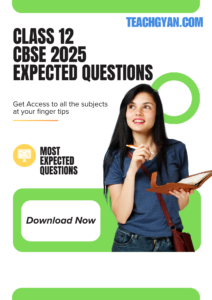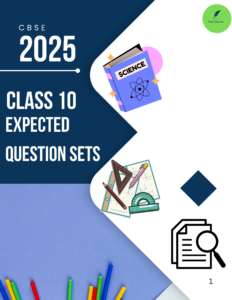A Disruptive Storm: How COVID-19 Transformed Indian Education
The outbreak of the COVID-19 pandemic acted as a disruptive storm, transforming every aspect of our lives, especially education. In this exploration, we’ll unravel the profound changes that unfolded in Indian education due to the pandemic, delving into the challenges faced, the adaptations made, and the resilient spirit that emerged in the face of uncertainty.
Section 1: “The Unexpected Shift: Embracing the Digital Classroom”
As schools shuttered their doors, a rapid and unexpected shift occurred towards digital classrooms. This section will unfold the challenges faced by educators and students alike in navigating this uncharted territory. From technical hurdles to creative solutions, we’ll witness the metamorphosis of traditional education into a digital realm.
Section 2: “Bridging Divides: Fostering Inclusivity in Education”
The pandemic underscored pre-existing inequities in education, shining a spotlight on the disparities in access to technology. Here, we’ll explore the efforts made to bridge the digital divide, ensuring that education remains a universal right rather than a privilege.
Section 3: “Rethinking Assessments: Innovation in Evaluation Strategies”
Traditional examination methods were disrupted, prompting a reevaluation of assessment strategies. This section will dive into the challenges faced by educators in evaluating student performance and the innovative methods that emerged to gauge learning outcomes effectively.
Section 4: “Embracing Change: Paving the Way for a Future-Ready System”
Looking towards the future, it’s essential to embrace change and adaptability. This section will discuss the resilience demonstrated during the pandemic and the vision for a harmonious coexistence of traditional and online education in the post-pandemic era.
Section 5: “Community Bonds: The Pillars of Educational Resilience”
The pandemic underscored the importance of collaboration and community support in the educational sphere. This section will explore the vital role played by teacher-parent partnerships and the engagement of local communities, highlighting the collective responsibility towards nurturing the next generation.
The Digital Classroom Revolution: Adapting to Remote Learning Realities
Introduction:
The advent of the COVID-19 pandemic triggered an unprecedented shift in the education landscape, thrusting educators and students into the uncharted territories of remote learning. In this exploration, we’ll unravel the challenges, innovations, and transformative experiences that characterized the Digital Classroom Revolution during these times of uncertainty.
Section 1: “The Overnight Transition: Challenges in Shifting to Remote Learning”
As physical classrooms closed their doors, the education community faced a sudden shift to virtual platforms. This section will illuminate the challenges encountered during this overnight transition, from connectivity issues to adapting teaching methodologies to suit the online environment.
Section 2: “Creative Solutions: Adapting Pedagogies to the Digital Realm”
In response to the challenges, educators displayed remarkable resilience by adopting creative solutions to engage students effectively. This part of the exploration will showcase innovative teaching methodologies, digital tools, and interactive platforms that emerged to enhance the remote learning experience.
Section 3: “Navigating the Digital Divide: Ensuring Inclusivity in Virtual Classrooms”
While the digital revolution brought new opportunities, it also exposed existing disparities in access to technology. Here, we’ll delve into efforts made to bridge the digital divide, ensuring that education remains inclusive and accessible to students from all walks of life.
Section 4: “Beyond Boundaries: Expanding Learning Opportunities through Technology”
The Digital Classroom Revolution opened up new horizons in education. This section will explore how technology broadened learning opportunities, providing students and educators access to resources and collaborations beyond the confines of traditional classrooms.
Bridging Gaps: Addressing Inequities in Education
Introduction:
The COVID-19 pandemic laid bare existing inequalities in our educational system, amplifying the urgency to bridge gaps and ensure equitable access to quality learning. In this exploration, we will delve into the challenges faced and the initiatives undertaken to address these inequities, fostering a more inclusive educational environment.
Section 1: “The Digital Divide: Unveiling Disparities in Access to Technology”
As education transitioned to virtual platforms, the digital divide became a stark reality. This section will shed light on the disparities in access to technology, exploring how these inequalities affected students and educators in various socio-economic backgrounds.
Section 2: “Creative Solutions: Initiatives to Overcome Accessibility Barriers”
In response to the digital disparities, innovative solutions and initiatives emerged to ensure inclusivity. Here, we’ll explore how educators, communities, and policymakers worked together to provide equal opportunities for all students, irrespective of their socio-economic circumstances.
Section 3: “Supporting Vulnerable Communities: Navigating Educational Challenges”
Certain communities faced heightened challenges during the pandemic. This section will delve into the efforts made to support vulnerable student populations, including those in rural areas or belonging to economically disadvantaged groups, to ensure that education remained a beacon of hope for all.
Section 4: “Empowering Educators: Professional Development for Inclusive Teaching”
Addressing inequities in education involves empowering educators with the tools and knowledge needed to create an inclusive environment. Here, we’ll explore initiatives and professional development programs aimed at equipping teachers with the skills to cater to diverse learning needs.
Reimagining Assessments: From Traditional to Innovative Methods
Introduction:
The COVID-19 pandemic brought about a significant upheaval in the way we assess and evaluate student learning. In this exploration, we will journey through the challenges faced during this assessment revolution, the evolution of evaluation methods, and the emergence of innovative approaches that redefine how we gauge student understanding.
Section 1: “Challenges in Evaluation: Rethinking Traditional Exam Paradigms”
The abrupt closure of physical classrooms disrupted traditional examination methods. This section will delve into the challenges faced by educators in adapting to the new normal, moving away from traditional exams, and finding new ways to effectively measure student comprehension.
Section 2: “Innovative Evaluation Methods: Embracing Continuous Assessment and Beyond”
Amidst the challenges, educators embraced innovation. This part of the exploration will showcase the rise of continuous assessment, project-based evaluations, and skill-based testing as viable alternatives to traditional exams. We’ll highlight how these methods offer a more holistic view of student performance.
Section 3: “Tech Tools and Digital Platforms: Transforming the Evaluation Landscape”
Technology played a pivotal role in reimagining assessments. Here, we’ll explore the integration of tech tools and digital platforms in the assessment process, making evaluations more dynamic, interactive, and reflective of real-world skills.
Section 4: “Student-Centric Approaches: Putting Learning at the Center of Assessment”
The shift towards innovative assessment methods also focused on putting students at the center of the evaluation process. This section will discuss how student-centric approaches, such as self-assessment and reflective portfolios, empower learners to take ownership of their educational journey.
Embracing Change: Paving the Way for Future-Ready Education
In the wake of the transformative impact of the COVID-19 pandemic, the education landscape has undergone a paradigm shift, calling for an embrace of change. This exploration navigates through the evolving educational terrain, highlighting the resilience demonstrated during challenging times and paving the way for a future-ready approach to learning.
Section 1: “Resilience Amidst Uncertainty: Lessons Learned from Adapting to Change”
The initial upheaval prompted educators, students, and institutions to adapt swiftly to new realities. This section will delve into the resilience demonstrated during the uncertain times, showcasing how the education community overcame challenges and evolved in the face of adversity.
Section 2: “Blended Learning: Harmonizing Traditional and Digital Education”
As we move forward, the integration of traditional and digital education becomes paramount. This part of the exploration will discuss the concept of blended learning, where the strengths of both traditional and online education harmoniously coexist, creating a dynamic and adaptable learning environment.
Section 3: “Tech Integration: Navigating the Digital Frontier for Enhanced Learning”
The future-ready education system embraces technology as an integral part of the learning experience. Here, we’ll explore the seamless integration of technology in education, leveraging tools and platforms to enhance engagement, collaboration, and personalized learning for students.
Section 4: “Lifelong Learning: Cultivating a Culture of Continuous Growth”
A future-ready education system recognizes the importance of lifelong learning. This section will discuss initiatives and strategies that encourage a culture of continuous growth, empowering both educators and students to adapt to evolving knowledge landscapes throughout their lives.
Community Bonds and Collaborative Learning: The Heartbeat of Education
Education is not just about textbooks and classrooms; it’s a collaborative journey involving communities, educators, and students. In this exploration, we’ll delve into the essential role of community bonds and collaborative learning, showcasing how these elements serve as the heartbeat of education, especially in the face of challenges brought on by the COVID-19 pandemic.
Section 1: “Teacher-Parent Partnerships: A Cornerstone of Educational Support”
Strong connections between teachers and parents are crucial for a child’s learning journey. This section will highlight the significance of teacher-parent partnerships, exploring how these collaborations contribute to a supportive educational ecosystem, both in traditional and virtual settings.
Section 2: “Community Engagement: Beyond Classroom Walls”
Education extends beyond the school gates. Here, we’ll explore the dynamic role of community engagement in the educational process, discussing how involving local communities enriches the learning experience and fosters a sense of shared responsibility for student success.
Section 3: “Student Collaboration: Fostering Peer-to-Peer Learning”
Collaborative learning among students is a powerful tool for academic and personal growth. This part of the exploration will showcase the benefits of student collaboration, both in physical and virtual classrooms, fostering a culture of shared knowledge and mutual support.
Section 4: “Online Platforms: Facilitating Global Collaborations”
In an interconnected world, online platforms have become bridges that connect students globally. This section will discuss how digital tools enable collaboration beyond geographical boundaries, creating opportunities for diverse perspectives and cross-cultural learning experiences.
Conclusion: Charting a Course for Educational Resilience
As we navigate the aftermath of the COVID-19 pandemic, it becomes evident that the education landscape has transformed, challenging us to chart a new course marked by resilience, adaptability, and innovation. This concluding reflection encapsulates the lessons learned and envisions a path forward toward educational resilience.
In the face of unprecedented challenges, the education community showcased remarkable resilience. Educators, students, and parents demonstrated an unparalleled ability to adapt swiftly to change, finding innovative solutions to sustain the continuity of learning. The pandemic underscored that education is not confined to physical classrooms; it’s a dynamic and evolving entity that transcends traditional boundaries.
The shift from traditional to digital learning, once deemed a necessity, has now become a catalyst for the future of education. Blending the strengths of both modalities, we find ourselves at the cusp of a new era — one where technology is seamlessly integrated, creating a more flexible and accessible learning environment. The resilience displayed during this transition is a testament to the adaptability inherent in the education system.
The digital revolution, however, unmasked existing disparities, illuminating the urgent need to bridge the digital divide. Initiatives to ensure inclusivity became a driving force, with educators, communities, and policymakers working together to provide equal opportunities for all students. In addressing these disparities, we pave the way for a more equitable and just educational future.
In the realm of assessments, the traditional examination paradigm was disrupted, leading to a reevaluation of evaluation strategies. The embrace of innovative assessment methods, such as continuous evaluation and project-based assessments, not only addresses the challenges posed by the pandemic but also aligns with a broader shift towards a more holistic understanding of student abilities.
Looking ahead, a future-ready education system emerges as a harmonious blend of tradition and innovation. Blended learning environments, enriched by digital tools, promote adaptability and lifelong learning. The importance of community bonds, collaborative learning, and the role of teachers and parents as partners in education are highlighted as integral components of this educational transformation.
As we conclude this exploration, it’s crucial to recognize that educational resilience is an ongoing journey. It requires a collective commitment to innovation, inclusivity, and adaptability. By leveraging the lessons learned from the challenges posed by the pandemic, we have the opportunity to shape an education system that is not only robust and dynamic but also deeply attuned to the diverse needs of learners.
In charting this course for educational resilience, we embark on a journey that prioritizes the holistic development of every student, fosters a culture of continuous learning, and embraces change as an integral part of the educational narrative. Through these efforts, we ensure that education remains a beacon of hope, empowering individuals to thrive in an ever-evolving world.



